We all feel the pressures of “speeding up” and are often being told to “optimize our productivity” and “maximize our efficiency”.
But how are we supposed to meet all of these demands?
All these pressures can cause us to feel a lot of stress and anxiety. Our solution to optimize your productivity while decreasing levels of stress at work is….
drum roll, please….
CHANGE UP YOUR WORK ENVIRONMENT.
Simple right?
Whether working in the same office space every day or working remotely from multiple locations, we suggest 18 tips that can help you improve your workflow and boost your mood and creativity.
If you are lacking motivation, feeling tired, stressed, lonely, or unhappy at work…
Or you are 100% loving your job and want to increase your productivity, optimize your and other employees’ productivity, and make your office environment a more livable space…
Try these easy-to-implement tips and tricks to revamp your work environment and better cope with a fast-paced environment.
Many articles suggest ways to be more productive while neglecting to realize how speeding up can actually harm your body, both mentally and physically.
Academic theorists such as Crary suggest that we are constantly given more work to complete in shorter amounts of time. It becomes easy to fall into a trap of constantly being overworked, burning out, and becoming downright ‘grumpy’ as we try to cope with all of these demands.
You may have tried a bunch of fads like diets, chocolate, and happy pills, but the secret is…improving your work environment. It is a short task to complete, for a long-term effect of being more productive and happy.
Your work environment not only includes your structural surroundings but also the people and the atmosphere around you. Yes, that ambiguous word ‘atmosphere’ can be very subjective but we refer to it as the tone or the mood you feel while at work. Your ability to focus and stay efficient, happy, and productive depends on how comfortable you feel in this space.
This blog post suggests what good working environment characteristics are, by focusing on the personalization of your work space. By following these 18 tips, you can create your ideal work environment to optimize your productivity… and whistle while you work.
Who should read this article? Our answer: Everyone
If you spend a significant amount of your life working, it is a good idea to invest even just a few minutes into making your work environment better for yourself, your coworkers, and your employees.
This applies to people in a workplace environment as well as those who work from multiple workstations.
As a remote worker, your so-called ‘work environment’ may lack some consistency. Since you may be working from different places every day, this might cause you to think that improving a work environment is not possible or does not apply to you.
WRONG!
Whether it is on your desktop, laptop, cell phone, tablet, iPad, or the traditional pen and paper, your work environment can be taken with you anywhere you go so, it is important to make sure you optimize your productivity by making your work environment a positive, attractive, and organized space.
With the increasing blend of work and home life, it is even more important to focus on creating a work environment that allows you to be more productive, stay focused, and feel less stressed. We also suggest ways that you can create a consistent work environment no matter where you are working from.
As a student, an employer, an employee, or a coworker, you can benefit from clearing up both your desk space and your headspace by using these tips and tricks.
Tip 1: Background noise or silence?
Where do you work best? Do you often find yourself answering emails on your phone as you sip your favourite mochaccino latte at Starbucks? Or are you usually nuzzled in a corner of the library surrounded by books?
Some people prefer to work within the hustle and bustle of a busy, public space. Working alone in a quiet space may seem boring to some and often shortens the length of time that you are able to sit and work.
Monitor the level of activity around you to determine whether or not you can keep your attention directed towards your task at hand. It is important to stay focused, but also find a space that allows you to work for a long period of time.
A bustling café may be what you need to feel active while working and staying seated. Or a library may pressure you to stay quiet and remain on task.
Going to a place where you are surrounded by people may add that extra pressure or motivation to work. A study done by Henry Allport suggested that productivity for individuals increased when they were surrounded by other people. You, however, may not agree and find that you could get easily distracted with other people around you. Some people like to be alone when they are working.
Finding the level of activity that works best for you will help you to stay productive. If you work better alone but cannot find a quiet place, try using earplugs and work in a corner where your eyes can’t wander. If you work better with noise but find yourself in a quiet place, plugging in your headphones and listening to music may help you to create background noise as you work.
Tip 2: Ritualizing a work environment
Where is your ‘work only’ zone?
A ritual can be coming to the same space to work or starting every workday with your special Starbucks order.
Where do you go in order to get work done? Do you start your ‘workday’ off in any particular way? We’re not talking about your everyday coffee shop unless you go there only to work. It can be hard to unplug ourselves from the office, as work life is taking over and infiltrating ‘home’ and ‘recreational life’.
We often multitask to get emails and work-related tasks out of the way, but sometimes trying to multitask doesn’t end well…accidentally typing what you just heard can leave you in some sticky situations.
Having your voice commands on your phone type in your reactions to your spouse or kid can set a pretty confusing tone to your company documents and emails.
We all know the terrors of hitting ‘post’ or ‘send’ and then noticing a typo or awkward autocorrect.
It is important to set a ‘work only’ zone, distinct from any other aspect of your life. Many of us like to multitask to get work done… But Netflixing or talking to friends may cause you to slip an accidental ‘LOL’ or ‘OMG’ to an important work email to your boss.
Visiting a particular space that is allocated as a work environment will keep you focused and productive.
Many office workers may already work at the same desk every day but you can add your own type of rituals to your work environment by using the same coffee mug every morning to start your day.

For remote workers, you might pick a restaurant chain to maintain a type of familiarity wherever you go.
For those lucky souls who do not need coffee to wake them up, starting your work day with a ritualization of working out or eating your favourite breakfast wrap in the morning can help set the mood for a productive day.
Consistency is key to establishing your workspace and separating it from your home or recreational space within your daily routines.
Tip 3: Personalizing your space
Do you feel alienated or disconnected from your work?
Does your work environment reflect you?
Different from ‘ritualizing your work environment’, personalizing your space includes placing familiar objects around you to increase your connection to your work and office environments.
If you feel alienated from what you are doing or simply want to improve the comfort of your work environment, bring a framed picture of someone you love, change your screensaver, and make your work environment feel more like your own.
Whether it is a family portrait on your desk or a funny screensaver of your pet, give your work environment that personal touch.
Tip 4: Remove clutter and the power of the ‘go-bag’
What do you really NEED at work?
We all have that one room, that one corner of the house, or that one desk drawer that holds mysterious items and all of our miscellaneous objects. It becomes our black hole of unrelated things…but there’s nothing ‘out of this world’ about it. It’s just plain clutter.
Get rid of it.
Even as you start to personalize a space, you have to be wary of going overboard. Don’t start filling your desk with trinkets and tacky items that detract from the cleanliness and simplicity of your work environment.
Try to keep it to two trinkets at time – you can even have them on a rotation to switch things up every once in a while
Having too many items on your desk (or desktop computer) can make you more distracted than productive.
Have only what you need around you.
If your work environment is too messy, it can be hard to find things when needed. A desk that’s covered in documents and unrelated items can prevent you from getting a task done in a timely manner.
Pencil holders can help you organize the contents of your desk. By shoving extra batteries, calculator, headset, headphones, pencils, pens, erasers, etc. all into a desk drawer, it can become hard to find what you are looking for.
If you work remotely and are always on the go, take a “go-bag” with you to carry all your essential chargers, devices, documents and other work-related items in one place. This may also prevent you from forgetting anything when you travel.
The same organization for a desk applies to a “go-bag”: Be sure you organize the contents of your bag within small containers or ziplock bags to prevent clutter.
Save yourself some time and be more efficient by placing all of your work tools within reach.
Tip 5: Keep your work environment sterile
Is your keyboard cleaner than a toilet seat?
According to a study by Which? Magazine, a keyboard could fester more bacteria than a toilet seat.
If you work with a lot of people around you, germs can easily spread and getting sick is always a setback to productivity.
Your health is important to staying focused and maintaining a positive attitude while working. To prevent yourself from becoming ill, be sure that your work environment stays sterile.
Schedule regular clean-up times.
Wipe your keyboard down at the end of each work week. You would be surprised what kinds of things could get stuck between your keys…including mice fecal pellets if you leave any crumbs behind.
Keep a garbage can nearby or a baggie in your “to-go” bag to separate trash from important documentation. Throwing out important documents can be your worst nightmare.
Whether it’s a digital or physical recycling bin, be sure you clean up your workstation regularly.
Tip 6: Plants, open windows, air fresheners
What is your favourite smell?
Many academic studies have argued that there is a correlation between certain scents and memories. Although individuals can have widely divergent emotional responses to scents, studies show that certain scents can change our emotions and improve our moods.
If you have a positive response to a certain smell, why not apply it to your work environment and create a more pleasing atmosphere for yourself while you work?
If you’re in an office space or are working out of a “to-go’” bag, try using air fresheners to keep your work environment smelling fresh and clean.
A cheap bouquet of flowers can provide a sweet and fresh smell, while also making your workplace environment more attractive and aesthetically pleasing.
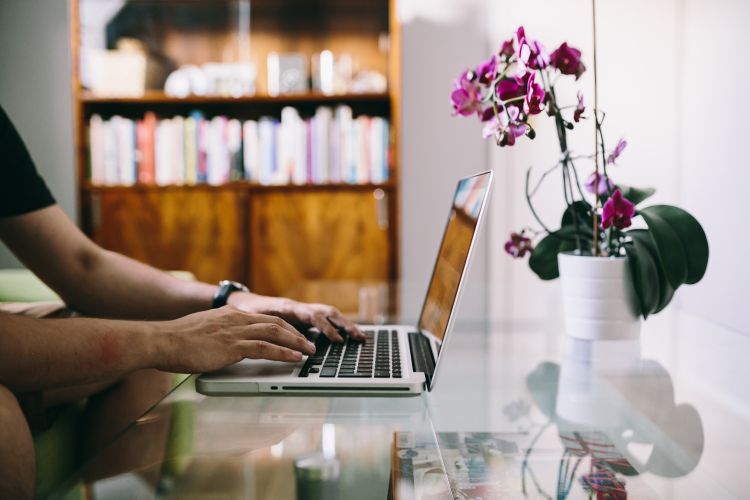
Plants have been proven to create a more positive environment by refreshing the air and uplifting moods in an office setting. Plants provide something organic in a workspace that might otherwise be very structural.
The Society of American Florists worked in cooperation with the Texas A&M University research team to study how plants and flowers improve workplace productivity. One hundred and one participants took part in emotional, creative, and attentional demand protocols. The study showed that problem-solving skills and creativity improved in workplaces with flowers and plants.
Tip 7: Brightness and lighting – Open windows and natural light
How much natural light are you exposed to while you work?
If you are stuck in an office space with florescent lights, it can be stuffy and make you feel trapped. Some studies prove that natural lighting promotes productivity, improves your health, and can have positive effects on your behaviour and mood.
We all know that blissful moment of feeling the warmth of natural sunlight on our skin. The natural light and slight breeze through a cracked window can really open up the room and make you feel happier.
Sometimes you cannot control where you work and might not have access to a window. Or as a remote worker, you might live in a city like Vancouver or Seattle where there are very few sunny days.
Don’t fret.
Placing a warm light, such as a lamp, on your desk, can create a more relaxing environment and prevent you from straining your eyes as you work.
Many studies show links between simple light exposure in workplaces and employees’ productivity and performance, and may even affect how much sleep you get.
If you are working on a screen, adjust its brightness. Not only will dimming the screen if it’s too bright help your battery life, it will also protect your eyes. Be sure to brighten your screen if you’re in a brighter room or you find yourself squinting and damaging your eyesight as you work online.
Plus, if you’re one of those people looking at a screen two inches away from your face, you might kink your neck while you work or walk into a pole outside if you’re glued to your phone.
Tip 8: Reduce eye twitches from overexposure to screens
How much time do you spend looking at screens?
Screen time can be a huge part of our work lives and day-to-day activities.
Not only should you adjust the brightness of your screen, you should also alter the font size, style, colour, and contrast to keep you from squinting and straining your eyes.
If you are squinting at your screen or continually scrolling, change the zoom on your monitor.
For an Apple computer, display settings are found in Systems Preferences (in the Applications folder in Finder). Computers running on a Microsoft Windows operating system can adjust display settings in the Control Panel.
You can also minimize glare by paying for anti-reflective (AR) coating, or you can simply blink more often, for free, to reduce straining your eyes.
Since most of us blink subconsciously, you can try what many eye doctors prescribe as the “20-20-20 rule”, where you:
- Look away from your computer at least every 20 minutes
- Gaze at a distant object (at least 20 feet away)
- Look at it for at least 20 seconds
This short break can significantly help reduce the strain on your eyes.
Tip 9: Schedule breaks without a clock
How often do you take breaks while you are working?
Be sure to take little breaks and look away from your screen, even for a moment, before diving back into work.
Whether you are sitting at a desk or working from your cell phone, take a break to step away from what you are doing.
Look around you and increase your awareness of your surroundings.
Stepping away from that page or screen will allow you to come back to your work with a fresh mind and fresh pair of eyes.
We live in a world without “dead time” and that all time is “penetrated and taken over as work time, consumption time, or marketing time”. In order to be refreshed, we must be sure to take breaks to prevent ourselves from burning out.
Employers who may be wary of employees taking too many breaks can look at solutions like IoT based Employee Monitoring to have seamless tracking.
We all know that feeling of time slowing down when we stare at our clocks, so don’t keep a clock visible at all times to track how long you are working.
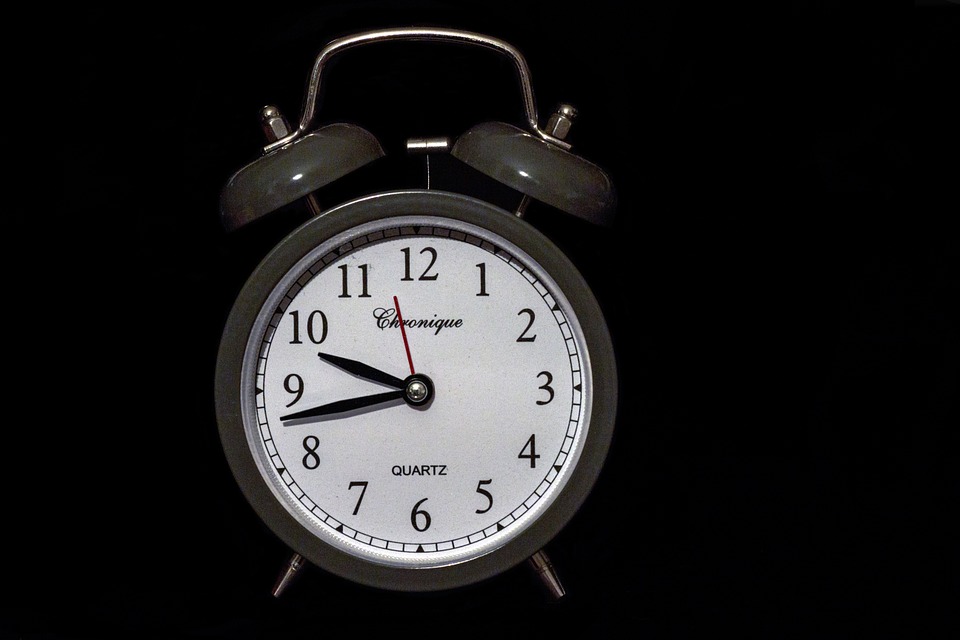
Simply schedule reminders to pop up on your cell phone or your computer instead. You can also place your clock within a desk drawer or to-go bag, to keep it out of sight until needed.
It is important to periodically check the time when you are working with tight deadlines but if you are continually staring at a clock, it might make your task feel prolonged or increase your levels of stress. You can schedule yourself timers with a countdown including “half an hour left” or “fifteen minutes left” to keep you on track.
If you have a tight schedule and cannot afford to take a longer break, simply switch between work tasks and assignments.
Changing up a routine or breaking down a longer, monotonous task is important to keep you focused.
If you keep yourself stuck on one continuous thought-pattern for too long, not only does it block creativity, it can also be unhealthy and unproductive.
Warning: Ensure that you are not switching tasks too often because that can be distracting and actually become counter-productive and more stressful.
Observing how long you can stay on task can help you determine what work environment works best for you. Your focus may vary depending on the task at hand, or change daily depending on your fatigue and the amount of sleep you had the night before. When you do notice yourself drifting off and begin daydreaming, try taking a break or switching things up.
Tip 10: Neck pain and back strain
Do you sit at your desk and hear the clicking and cracking noises in your neck, back and shoulders every time you move?
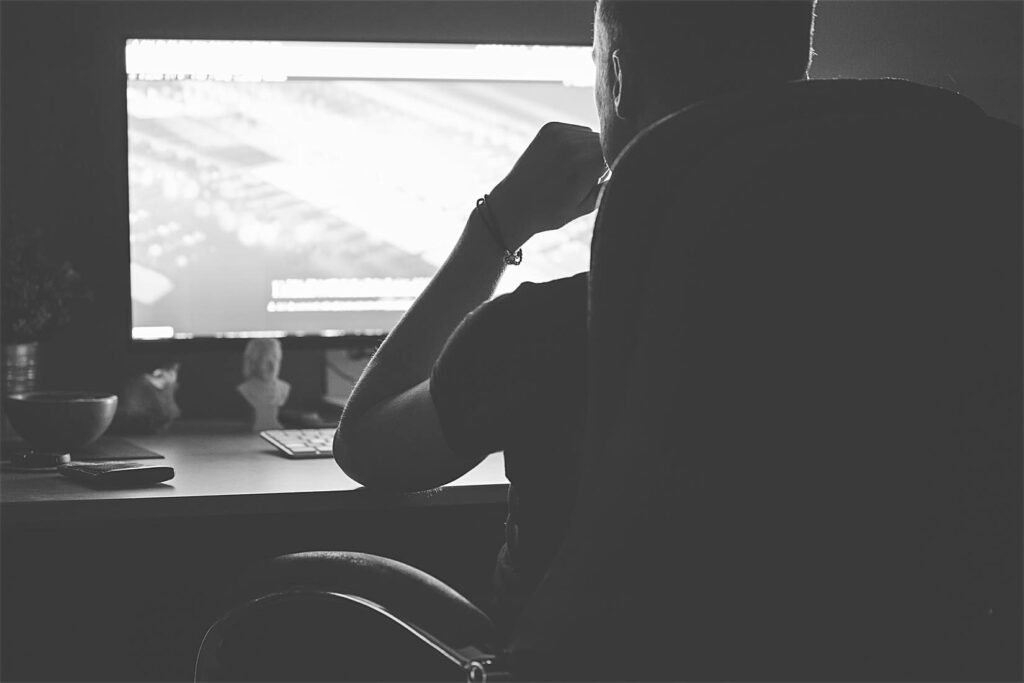
It is important to be comfortable and sit in a position that maintains good posture. Posture is important.
Standing desks can prevent you from tightening up and slouching all day, but standing for long periods of time might not be good for everyone.
A lot of research argues that standing desks are better for your posture, but let’s be real… if I am writing a 3,000-word post like this, I would prefer to be seated. Let’s keep the strenuous exercise for the gym.
There is a long-standing debate between the use of an office chair or a stability ball to increase your posture. It has been argued on both sides, and many studies even find that the exercise ball can be worse for your posture. These mixed reviews make our opinion on this issue inconclusive.
We can, however, conclude that sitting for a long period of time can cause much discomfort.
Rather than being a guinea pig to all these different desk solutions, we suggest incorporating scheduled break times and stretching periodically.
Make sure you stretch and become aware of what is sore and why – this can help you improve your overall posture. Even getting yourself a massage or cracking out your bones at a chiropractor one a month can make a huge difference.
An ergonomic office chair, a sit-stand workstation, or short walks and small stretches throughout the day can help improve your overall balance, stimulate productivity, and increase your comfort while working.
Having a comfortable chair and a high enough desk can make all the difference.
If you often work remotely and spend a lot of time on your cell phone, holding up your device at eye level can prevent you from slouching and straining your eyes and neck.
Tip 11: Water and snacks
Do you drink that classic order of 6-8 cups of water a day?
Drinking 6-8 cups a water a day can be hard to keep track of. Try to simply keep a water bottle with you at your desk or in your to-go bag.
It can be painful to swap a cup of joe for water, but keep a long-term plan in mind: start off your day with your coffee or tea but throughout the day drink water regularly.
Staying hydrated is not only important for your overall health, productivity, and improved memory, it also keeps you refreshed.
It can be easy to forget to eat or drink anything if you become engrossed in your work. Schedule yourself water and snack breaks or simply keep a water bottle in sight so that you keep hydrated throughout the day.
Keep snacks (both healthy one and guilty pleasures) within reach.
A hungry mind is not a focused mind. Pack a few of your favourite snacks to keep you satisfied and working as you eat.
Snacks can be a great reward, so keep a few with you in your “go-bag” or at your desk to reward yourself for small victories
Tip 12: Checklists: Celebrate small victories and manage on-going tasks
How often do you pat yourself on the back? Do you know what you have accomplished at the end of each day?
Checklists keep you on track as they can help you organize both long-term and short-term goals.
If dealing with time constraints, checklists can help you to know exactly where you need you allocate time and effort to be most productive.
Checklists also break down larger problems into smaller tasks. A few smaller tasks can be less overwhelming than the large difficult tasks, and thus improve employee productivity.
Writing a to-do list is a good way to remember where you left things off the day before.
Keeping checklists open in your workspace while you work will remind you what tasks you have on your plate and allow you to work towards these goals. You can also update it throughout the work day in case you get interrupted or have many projects on the go.
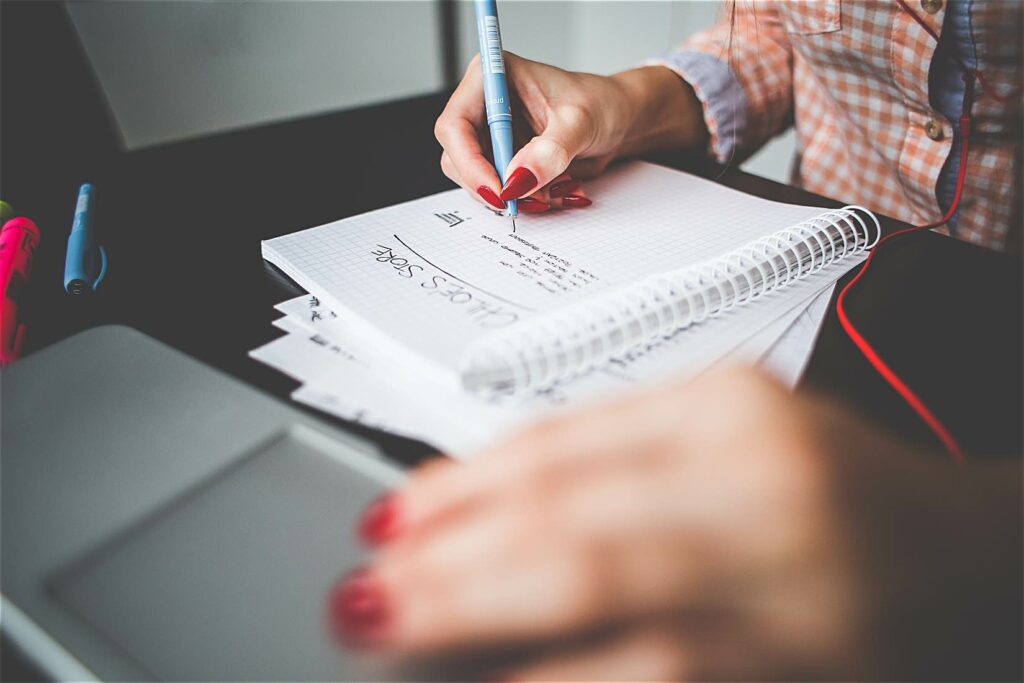
And don’t forget to keep track of what you have completed rather than solely focusing on the ongoing list of what you need to do. Remind yourself of your accomplishments and check off each completed task on the list.
Celebrate your successes. This will keep you motivated if you see progress rather than a continual workload.
You can leave space on your checklist to comment on how you completed that task, and help you realize what you liked or found most effective in achieving this goal.
Comments will also help you to realize what you could change to optimize your time and your efficiency; they can help you to understand what to do differently the next time you approach that task.
A notepad or a digital to-do list is a simple way to keep a regular routine to your day.
Time Doctor allows you to keep track of where you are spending your time and can help you keep track of your goals.
Tip 13: Keep a well- balanced temperature
Are you too warm or too cold?
Keep the temperature of your room or office at a pleasant level.
It seems simple, but being aware of how comfortable you are as you work is important.
If you are lucky and get to work from home while staying in your pajamas, this might not be as much of an issue for you. If you are going to work outside of the comfort of your home, make sure that you are warm or cool enough.
Keep your favourite sweater or blanket at your desk or in your to-go bag.
If you are in the office, dress for success but make sure you stay comfortable.
Tip 14: Use a calendar
Do you use a calendar? Because you should.
Keep a record of your weekly events, whether they are meetings, scheduled interviews or phone calls – set reminders for yourself if you are using programs like Outlook.
Calendars can be different from to-do lists because they allow you to create entire schedules with more details over longer periods of time. Individual calendars can also be coordinated with team schedules.
Calendars can help to promote teamwork and communication skills between coworkers and employees.
Keep track of what you are doing on a daily basis and stay organized for yourself, while also being aware of what your coworkers are doing. This will help you to keep track of your responsibilities, those of your coworkers and your expectations of one another.
When your work environment is constantly changing, and coworkers are dispersed, having a central way to coordinate what you and your coworkers are doing can keep you organized – organization and clarity are key to improving your work environment.
Time Doctor allows you to centralize multiple schedules for different teams in the same place, to increase the organization and daily activities of all workers.
Tip 15: Start every work day with the same task
What do you do as soon as you start working?
Even in the most unpredictable jobs, predictability is key to keeping some sort of order within the chaos of your day-to-day activities.
Keep a structure and start every day the same. This may help keep you on track as your tasks may vary throughout the day.
Starting off each day by checking emails or responding to voicemails and missed messages can get you ready for your day ahead, no matter what curveballs come at you.
Tip 16: Write summaries
How many times do you leave a meeting and forget half of the things that were said or discussed?
Make notes as you attend meetings, either on paper or through digital files.
After attending work-related meetings, write a brief summary of what was discussed. This will help you remember key points in case you need to reference anything from the meeting in the future.
After training sessions or tutorials, make yourself a short summary or worksheet to record work processes and program procedures. This will help you to stay organized and remember tasks that may have already been explained to you.
Organize these notes using labels and folders with straightforward titles.
Apps like Time Doctor keep all of your notes in one place, to tell you exactly where to go when looking up this information.
Give your employees the organizational tools you would like them to use on a daily basis. Provide them with programs like Time Doctor, planners, organizers to be able to accomplish tasks with more ease and efficiency, reduce stress levels of your employees, and improve communication and productivity within the work environment.
Tip 17: Keep applications silent
How often are you tempted to check your Facebook messages or texts as you work? Be honest.
Keep your phone or your chatrooms on silent while completing an urgent task. Remove objects that you know will be a distraction to you as you work.
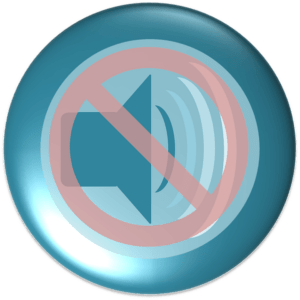
Avoid opening multiple browsers at once to allow you to focus on the task at hand.
Many studies have proven that multitasking is actually very hard to accomplish, so it may be best to hide your phone in your purse or desk or keep it on silent until you want to take a break from what you are doing.
Close all social media sites and do not let applications interrupt your concentration.
Some jobs require you to keep your phone or application such as Skype open at all times. To prevent yourself from wasting time checking messages, keep your application open but on silent so that you can see if you get a message and only check these devices when you do.
We all want to stay connected and plugged it, but make sure you connect with your work team or your friends and family when the time is appropriate.
Tip 18: Socialize
Remember what I said about turning off devices? Well, make sure you plug yourself back in when your work is over.
Being social is healthy. For remote workers, this is especially important. As an offsite worker, it can be easy to fall into a place of isolation. Remind yourself that you are part of a team or a larger industry with other people.
Make going to work a team-based effort, whether it is getting to know your clients, your employees, or your coworkers.
It is important to create a work environment that both uplifts your attitude, while also fostering a place for you to be productive.
Remembering that you are completing this task with other people can help you connect to what you are doing and decrease your level of stress and anxiety.
By getting to know your coworkers, you also reiterate your importance and role within the company or project.
When you know your place in your work environment, the job itself can feel more rewarding.
Check out this short video to see why Time Doctor is a great choice to help with employee management:
Summary
- With work life and home life continually intertwined, and the pressure to complete more tasks in a shorter amount of time, it is very important to be aware of your work environment, your work routine, and your mental health to avoid burning out.
- Your work environment should be a place of comfort, not an uncomfortable or monotonous office space.
- Boosting your work environment can allow you to connect more to your work, promote a sense of fulfillment and happiness, while optimizing your productivity.
- Get to know your co-workers or other people in the industry.
- Celebrate small victories.
- The physical and mental space of the place in which you work must be decluttered, organized, clean, creative, and personalized in order to best promote productivity.
- Take breaks.
- Understand your responsibilities, those of your coworkers, and your expectations of one another.
Amara writes for TimeDoctor.com, a software designed for tracking hours and optimizing productivity for remote workers and remote teams.
Productivity FAQs
How does my work environment increase overall productivity?
A happy workplace with high employee morale will typically set up any business for increased productivity. Much of this can be attributed to a positive work environment since employees will enjoy being there compared to simply punching in and out every day.
How can I improve my productivity?
There’s no one-size-fits-all solution when it comes to improving your productivity. However, taking breaks throughout the workday, reducing the amount of multitasking you attempt, and setting smaller goals so that you can experience more “wins” are great starting points for improving productivity.
What are some quick and easy ways to improve my office space?
While there’s no shortage of ways that you can improve your office space for increased productivity, some quick ways to get started include opening up your workspace to allow more natural light inside, add cozy elements such as plants and couches, and personalize your desk with photos of your loved ones. These simple tips will give your workplace environment a more inviting and comfortable vibe for you and your employees or co-workers.

Amara writes for TimeDoctor.com, a software designed for tracking hours and optimizing productivity for remote workers and remote teams.


